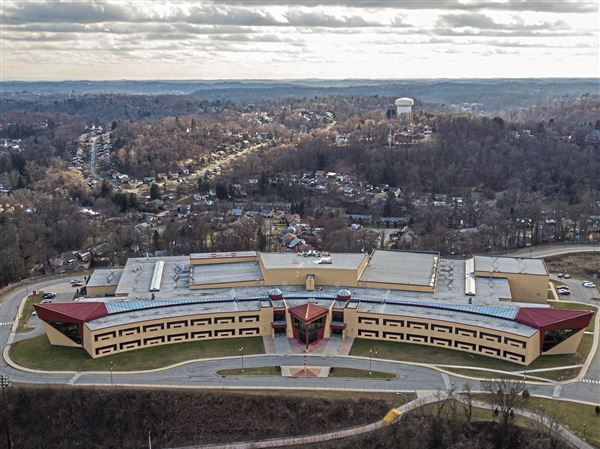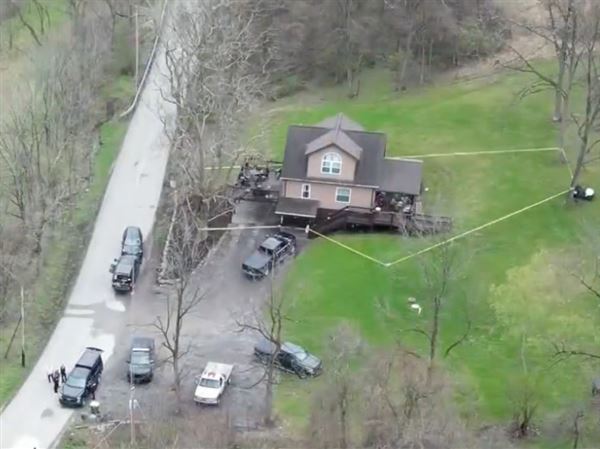Inspired by Pittsburgh's national reputation in historic preservation, its namesake university is considering developing a degree program in the field.
The academic discipline devoted to the study and preservation of old buildings is relatively young. New York's Columbia University began the first one a little more than 40 years ago. Since then, preservation education has grown to include a dozen institutions offering undergraduate degrees or certificates and 24 offering graduate programs.
Some of those, such as Belmont Technical College in St. Clairsville, Ohio, offer hands-on training for students who want to learn the building trades. Others take a more academic approach. Columbia, for example, offers a comprehensive architectural, legal and technical program, but with an emphasis on interpretation. Students explore the meaning of historic buildings and the lessons they convey about the human condition so they can make effective arguments for preserving them.
Pitt isn't sure which direction a program here should take, and that's one of the reasons it's hosting a day-long symposium Saturday, bringing together the heads of some of the country's top preservation programs with representatives of local museums, preservation groups, architecture firms and universities, including Pitt faculty and students.
"We're really not approaching this with a set idea of how preservation ought to be taught," said Dr. Drew Armstrong, Pitt's director of architectural studies in the department of history of art and architecture. "The entire objective is to make and solidify connections within the city and the larger community of preservation."
In addition to hooking up with potential local and national partners, another product of the symposium, called "Current Directions in Historic Preservation," will be a report summarizing the proceedings and laying out a strategy for the next step forward.
About 1,400 students are enrolled in preservation programs around the country, preparing for careers with architecture firms, planning agencies, community development and preservation groups, museums, archives and universities. Their work can involve developing strategies for saving historic buildings or doing the physical work of preservation, such as pointing handmade bricks and repairing windows.
"We want to understand what the range of career options is," Armstrong said.
The heads of preservation programs at the Art Institute of Chicago, Belmont, Columbia, Cornell, Pratt Institute and the universities of Mary Washington, Pennsylvania and Virginia will attend and present overviews of their offerings.
"What did they go through to create their programs? What kinds of changes do they foresee? Directors of programs are sitting on years of experience and knowledge that I'd like to be able to tap," Armstrong said. "What we end up doing at Pitt will not be a copy of anyone. We first need to learn what is being done and then determine what makes sense in Pittsburgh."
Historic preservation programs traditionally are interdisciplinary, drawing from different departments in a university to put together a comprehensive program. At Pitt, Armstrong said, historic preservation could benefit from an association with the university's School of Public Health.
"Because there isn't a model for a historic preservation program that developed with a school of public health, on the surface it is not entirely obvious," Armstrong said. "But there is potential. In the context of urban planning and smart growth, public health is there."
That's one of the reasons Armstrong invited Mindy Thompson Fullilove, professor of clinical psychiatry and public health at Columbia University, to participate in the symposium and provide "reflections" on the morning program. Fullilove is the author of the 2004 book "Root Shock," which explores how 1950s and '60s urban redevelopment impacted families in Roanoke, Va., Newark's Central Ward and Pittsburgh's Hill District.
Pitt has offered a certificate in historic preservation since the mid-1990s. But because students don't have to declare it, Armstrong, who came to Pitt 18 months ago, wasn't sure how many students have earned it. Angelique Bamberg, Pittsburgh's former preservation planner who is in her fifth year of teaching in the certificate program, will moderate roundtable discussions at the symposium, which is free.
It will be held from 8 a.m. to 4 p.m. in the Cathedral of Learning's Babcock Room. Lunch is provided; at least 30 people are expected to attend. Reservations are a must: call Emily Schantz at 412-648-2400 or email her at ets2@pitt.edu.
First Published: February 21, 2007, 5:00 a.m.
















